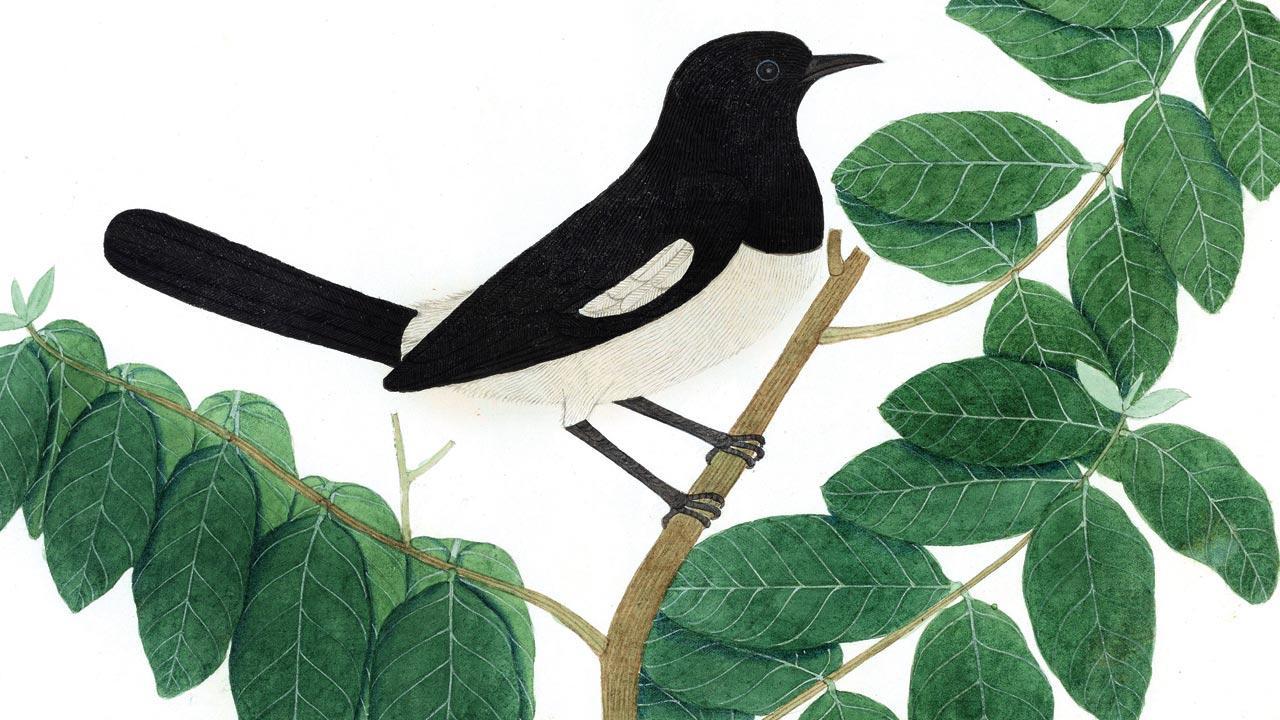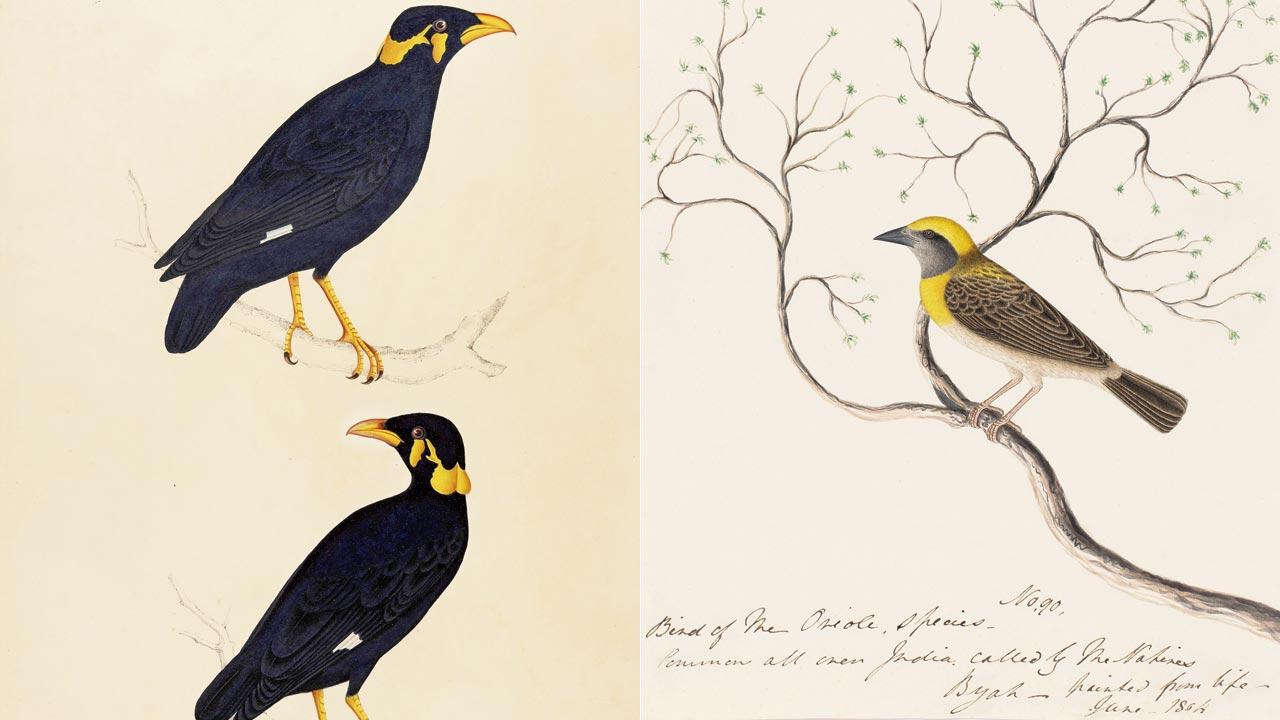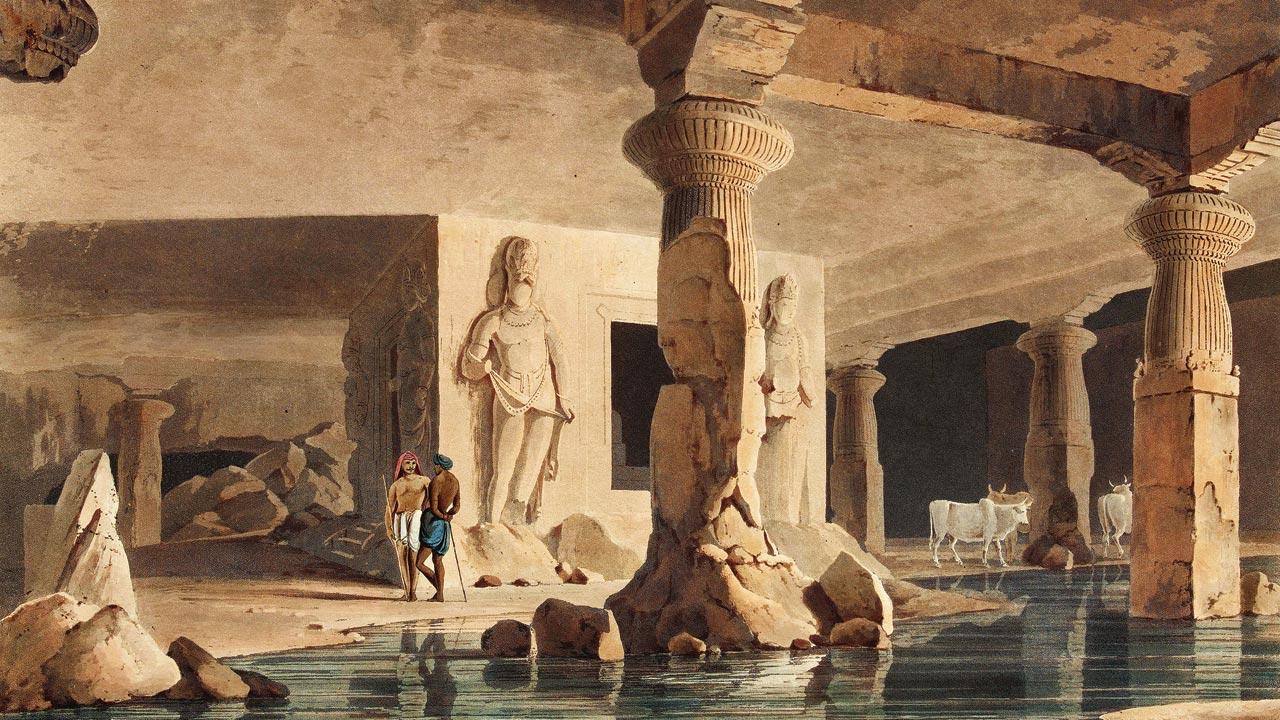Two exhibitions at Byculla’s museum tell visual stories of India from the 17th to 20th century through landscapes and Company paintings of birds

Oriental Magpie Robin (Copsychus saularis), Birds of India. Pics courtesy/DAG
In the 18th and 19th centuries, a lot of Indian artists were commissioned by the British to visually document their land and people. From architecture to trade and commerce, and natural history to the everyday life of people, these artworks, called Company paintings, reflected India in a foreign palette — a rare hybrid of the delicacy and details of Mughal atelier-trained artists and the refinement of European art. A curation of 125 Company paintings of Indian birds, the first of its kind in the country, is now being showcased by DAG at Dr Bhau Daji Lad (BDL) Mumbai City Museum at an exhibition titled Birds of India: Company Paintings, c. 1800-1835.
ADVERTISEMENT
 Hill Myna (Gracula religiosa) and Baya Weaver (Ploceus philippinus)
Hill Myna (Gracula religiosa) and Baya Weaver (Ploceus philippinus)
Curated by Dr Giles Tillotson, senior vice-president, exhibitions and publications, DAG, the showcase depicts birds from across India, and includes baya weaver, golden oriole, oriental magpie robin, different kinds of hornbills, Asian paradise-flycatcher, hill myna, and Eurasian woodcock, among other species, many of which are rare today. “A lot of Company paintings in India came out of the botanical gardens of India; the directors of these gardens commissioned artists. We regard Company paintings as great works of art but I don’t think that’s necessarily how the patrons of the time were seeing them — they were keen on getting the artists to record the appearance of the flora and fauna as accurately as possible out of a scientific interest,” shares Tillotson. So, the artists observed the birds in open spaces, as very few of them were captured. “They were constrained in that sense because this was long before taxidermy was invented, or before the days of binoculars. As a result, some paintings reflect a few errors,” he adds.
 Part of the interior of the Elephanta by Thomas Daniell and William Daniell
Part of the interior of the Elephanta by Thomas Daniell and William Daniell
Birds of India will be on display at the museum along with another exhibition, New Found Lands: The Indian Landscape from Empire to Freedom, till February. It features 99 artworks from the archive of Cunninghame Graham (1800-1804); an album dating back to 1810 of birds from north-east India; The Faber album from 1830 in which the artist’s observations contribute to the ornithological studies expounded in this exhibition; and four folios by artist Chuni Lal of Patna from the 1835 Edward Inge album. “Chuni Lal was the only identified artist [in these paintings], because the patrons then were more interested in the subject rather than the artist,” explains Tillotson.
 Dr Giles Tillotson
Dr Giles Tillotson
The curator informs us that the exhibition traces the journey of Company paintings from a time when it was a niche genre to when it became a popular style. “Ornithology has been a lifelong passion of mine. I grew up engaging in bird watching, including in India in the past 40 years, so it was a wonderful experience curating the exhibition,” he signs off.
Till February 15, 10 am to 6 pm
At 91-A, Veermata Jijabai Bhonsale Udyan (Rani Baug), Dr Babasaheb Ambedkar Road, Byculla East.
Call 23731234
Landscapes of India
Also on display at the museum is New Found Lands: The Indian Landscape from Empire to Freedom, an art-historical show unravelling a three-part visual story of India from 1780 to 1980. Featuring 108 works, it investigates the development of landscape painting from the perspective of the ‘picturesque’, the ‘naturalistic’ and the ‘free’ phases in a 200-year period.
“It’s a story of the freedom struggle, the imposition of foreign values, Indians assimilating a Western approach and applying it to their country, and then a period of more liberty when artists invented newer approaches and styles to look at their own land,” shares Tillotson. Tasneem Zakaria Mehta, MD and director, BDL Museum, said, “Both the exhibitions comprise artworks that reflect artistic developments and influences that had a powerful impact on art movements and cultural production in India, particularly on the students of Sir JJ School of Art during this period and for many years after. A range of talks and activities have been planned in conjunction with the exhibitions, and we look forward to welcoming our friends and patrons.”
 Subscribe today by clicking the link and stay updated with the latest news!" Click here!
Subscribe today by clicking the link and stay updated with the latest news!" Click here!







